* Updated with Corrected Images & Explanations.
After the break you'll find several images of a bogus Person of Interest (PoI) that were recorded by a DCCTV system. Two different analog CCTV cameras with built-in IR illuminators were connected to the black-box, h.264 DVR. These JPG images were exported from the DVR’s proprietary player. All of these images exported at 704 pixels by 480 pixels. When the recorded video is played back via the proprietary player it is displayed at 630 x 455; however, analysis of the proprietary file and exported AVI files reveals both of those contain a 704 x 480 video stream.
Your task, should you choose to accept it, is to:
- Describe the PoI’s clothing items from these images as you would for producing a BOLO. Note any issues that may affect your description.
- Identify the single most important correction that should be made to these images prior to printing. (BONUS - Why does this correction need to be made, and what tipped you off to it?)
If you’ve taken one of my recovery classes or attended one of my presentations on the topic at a LEVA conference or other event, you may have seen these examples.
DCCTV Exports - Questioned Images
All DVR & camera settings for these recordings were left at their default, out-of-the-box settings.
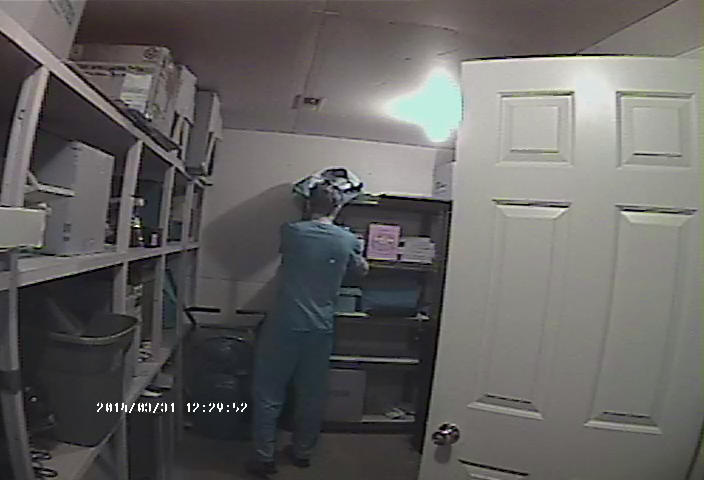 |
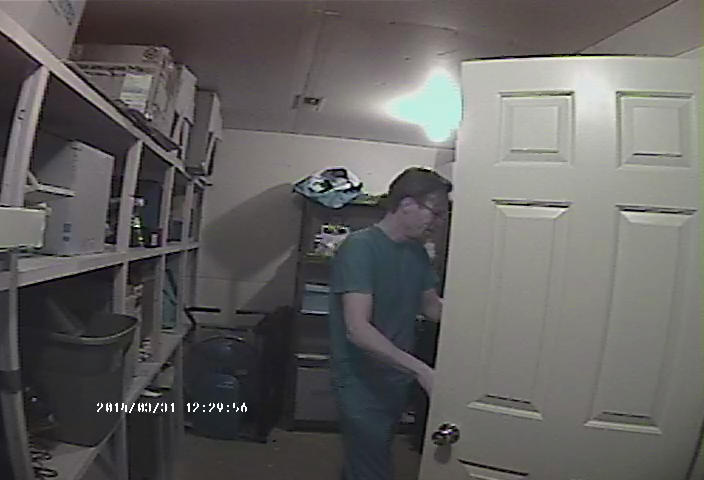 |
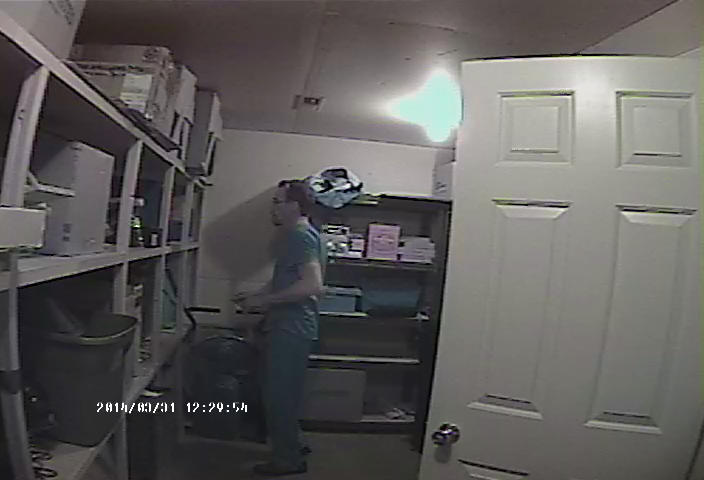 |
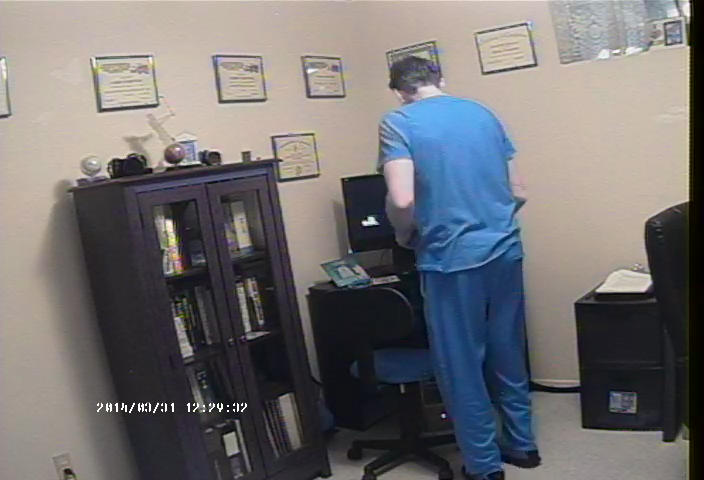 |
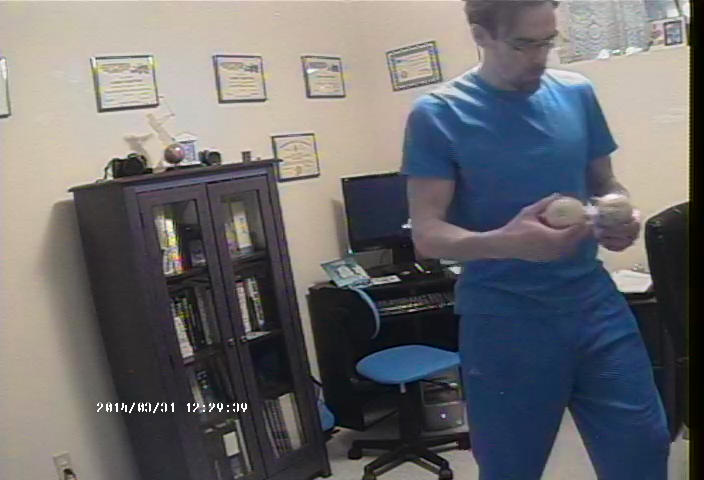 |
 |
Right-click "Open Image in New Tab" to view the full-size image or Right-Click and "Save Image As" to download.
Issues & Explanations - Questioned Images
How did you describe the clothing from the Questioned Images for your BOLO? Did you notice anything odd about the images? Did you mention color, and if so, how?
Issue #1 - Infrared (IR)
Although the clothing items worn appear to be a blue-ish/green color, as shown in the known images below the actual clothing worn was all black. Like many black-box DVR units sold in department & big box stores, this system was equipped with cameras that included infrared illuminators for better low-light coverage. These particular cameras, like many packaged with these low cost systems, leave the IR illuminators on all the time regardless of the lighting environment. Even without IR illuminators projecting an obscene amount of IR into the scene, IR anomalies can still be present due to other component and environmental issues.
Recovery Notes Are Critical
Often it is impossible to identify infrared's affect on an image from just the image alone, and no prior knowledge of the scene or items photographed. With prior knowledge of the scene you may recognize color anomalies more readily, which is why I strongly recommend that you look for them during the recovery process. Do colors appear consistent in the recovered video? Do any of the cameras use IR illuminators? Etc.
So how would you have described the perp's clothing?
Always lean on the side of caution when describing colors from CCTV video, that's my policy. I would have used the phrase "appears to be" blue in color, as that's a fair assessment based on the information I have available to me at the time.
Now had I done the recovery, I would have noted that the office chair appears blue in the recording, when in fact it is all black too. Red flag (no pun intended).
So how do we color correct images affected by IR?
We don't. We convert the images/video to grayscale to minimize IR's affect on colors, which can be distracting & misleading. Even in grayscale, however, it is important to understand that IR can and will still present issues in regards to interpreting whether an object is light or dark in color. It has to do with the frequency of IR, the materials the IR is reflecting off from, the types or paint or dyes used on/by those materials, and more.
I told you, don't even try to forensically color correct an image or frame of video that has been corrupted by IR.
Known Images of Clothing
Below are the known images of the clothing worn during the above referenced recordings.



Known clothing is all black - shirt, sweatpants, shoes. Shirt is 100% cotton, pants are a polyester blend, shoes are polyester blend with rubber soles.
Aspect Ratio Correction
Below are the images with the proper Display Aspect Ratio (DAR) correction applied.
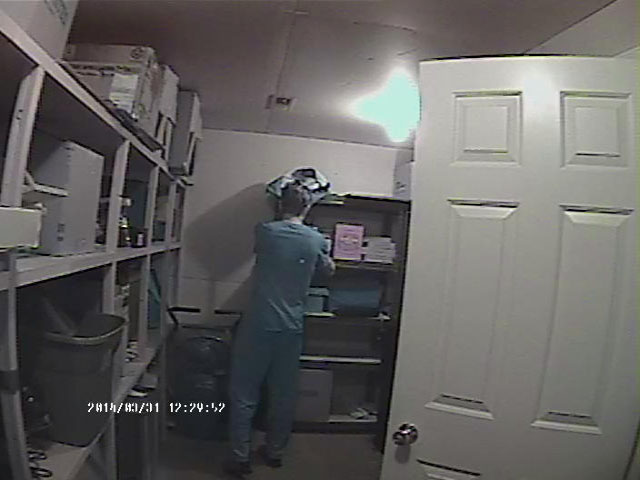 |
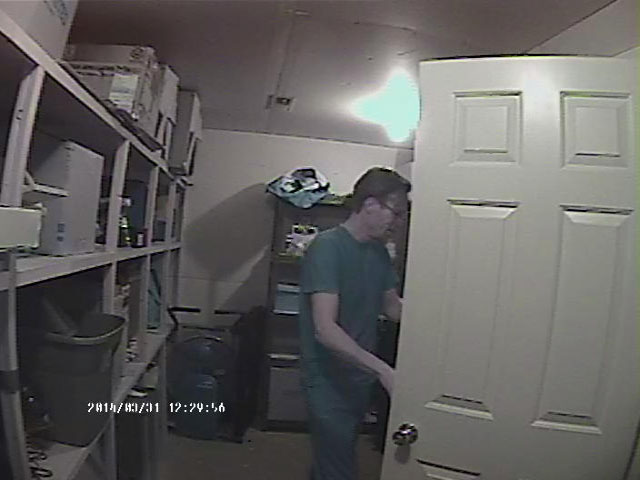 |
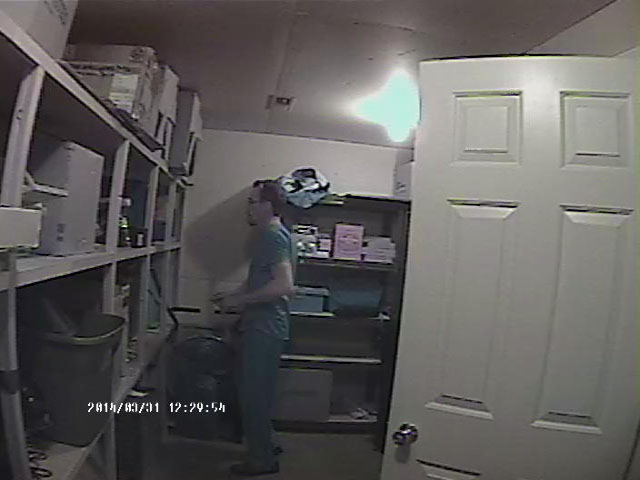 |
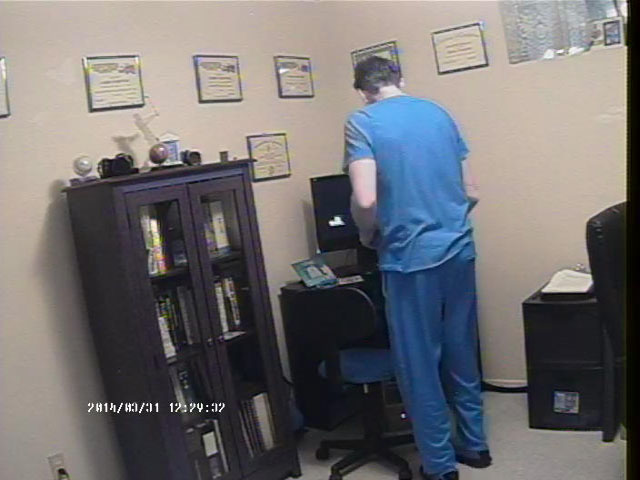 |
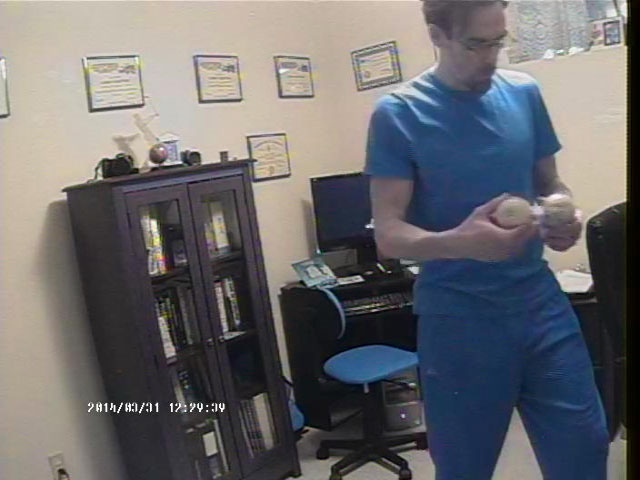 |
 |
Right-click "Open Image in New Tab" to view the full-size image or Right-Click and "Save Image As" to download.
Below is a transparent overlay of the original and the aspect ratio corrected image:
Aspect Ratio Correction from Larry Compton on Vimeo.
Issue #2 - Aspect Ratio
I know from the raster size of the image exports alone that this DVR was likely set to NTSC, and that the images should likely be displayed 4:3. Again, detailed notes regarding the system's settings during recovery could confirm the NTSC/PAL setting and recording raster sizes are generally found in the settings and documentation as well. Unless it is a hybrid system or NVR, chances are the analog camera signal is being sampled based on ITU Rec 601 for NTSC/PAL.
Some DVR proprietary players are nice enough to display their video/images at the proper Display Aspect Ratio (DAR), which is typically 4:3 with digital video created from analog CCTV cameras. There are a few exceptions, such as the Sony 960H camera sensors and related recorders, but generally, if it's an analog CCTV camera it should be displayed 4:3.
What Tipped You Off to the Aspect Ratio Issue?
The 704 x 480 images exported from the player. Again, research on the recording device and good recovery notes regarding the system settings are extremely helpful. This raster size is a NTSC DVD-Video standard size we're all very familiar with. Technically it is 4SIF, that is Source Input Format (SIF), not Common Intermediate Format (CIF). It is often referred to as D1 by CCTV manufacturers; incorrectly, I might add. Technically, NTSC D1 is 720 x 486, as it is based on ITU Rec. 601. The DV variation dropped this to 720 x 480 for NTSC, but I digress. In the world of analog CCTV cameras, all of these are intended to be displayed 4:3.
In order to be displayed at 4:3, the exported images need to be resized to 640 x 480 for proper display or printing. This would be the last step in my workflow typically, as I want to maintain and work with the originally sampled data all the way through clarification before interpolating for proper display or printing. (When I correct aspect ratio for square samples stored to formats intended for non-square samples depends on the other issues at hand. Search my posts for "aspect ratio" for more detail.)
Conclusion
Research & Experience: With experience you'll become more familiar with digital video standards and their technical details that may play a significant role in the proper interpretation of the recorded data. Along the way you'll learn that most of the world's leading CCTV equipment manufacturers don't get it right when it comes to referencing video standards based on sampling an analog signal. Proper training from a respected source can help.
Digital Video Recovery Training: Verify your recovered recordings before you leave the scene. Take detailed notes about the system components and settings, and look for color anomalies and aspect ratio issues while there on the scene. Bring these issues to the attention of those doing your recoveries through training, whether in-service or otherwise.
I would also strongly encourage you to consider some of the world-class Digital Video Recovery training provided by my employer, Magnet Forensics, such as their DV200 training course.

 DME Resources
DME Resources
